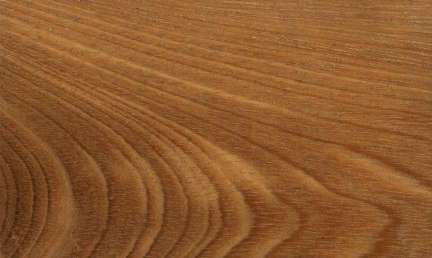
losum (Caryocar vil)
Family: Caryocaraceae
Common names: AjAlmendrillo, Almendro, AlmendrAlmro, Arbe a buerre, Bats souari, Cagawari, Pekia, Pequi, Pequia, Piquia, Piquia bravo, Piquia-ete, PiquiSawarie, Souari, Vinagreira
Distributed in: Brazil, Columbia, Costa Rica, French Guiana, Guyana (Central America, Latin America)
Distribution overview: Originally Upper Amazon; dispersed in all the Amazon; introduced in tropical Asia.
Common uses: Boat building (general), Boat building: decking, Boat building: framing, Cabinetmaking, Cooperages, Flooring: commercial heavy traffic, Flooring: industrial heavy traffic, Furniture, Heavy construction, Joinery, Light construction, Marine construction, Mine timbers, Oars, Piling, Railroad ties, Turnery, Vehicle parts, Wheels
Environment profile: Data source is World Conservation Monitoring Center
The environmental status of this species in the wild in Peru and Brazil is currently listed as unknown because of inadequate informatio
Tree size: Tree height is 10-20 m
Colors: the heart isYellow to golden-yellow to orange, Yellowish - light graysh brown and the sapwoodWhite, Yellow.The grain isStriped figure, the textureUniformand the lusterDull
Natural durability: Susceptible to marine borer attack, Very durable
Odor: Has an odor
Green material may have a faint odor of vinegar, but seasoned wood has no characteristic odor or taste
Kiln Schedules: Dry at a slow speed
Drying Defects: Splitting, Surface checks
Ease of Drying: Slowly
Tree Identification: Bole/stem form is straight
Comments: General finishing qualities are rated as good
Blunting Effect:
Cutting edges are dulled quickly because of interlocked grain.
Boring: Fair to good results
Carving: Fair to Good Results
Cutting Resistance: Easy to saw
Gluing: Use special attention for best results
Mortising: Fair to Good
Moulding: Fair to Good
Movement in Service: Fair to Good
Nailing: Difficult to nail, Satisfactory nailing properties
Planing: Moderate difficulty
Resistance to Impregnation: Resistant sapwood
Response to hand tools: Responds Readily
Sanding: Fair to Good Results
Screwing: Difficult to screw
; Turning: Fairly Easy to Very Easy
Polishing: Satisfactory; Staining: Requires care to stain
;
- Numerical data Metric
- Numerical data English
- Strength properties
- References
 |
 |
 |
 |
| Item |
Green |
Dry |
Metric |
| Specific Gravity |
0,65 |
0,76 |
|
| Density |
|
865 |
kg/m3 |
| Bending Strength |
956 |
1371 |
kg/cm2 |
| Crushing Strength |
143 |
222 |
kg/cm2 |
| Hardness |
|
923 |
kg |
| Impact Strength |
|
|
cm |
| Shearing Strength |
|
153 |
kg/cm2 |
| Stiffness |
126 |
148 |
1000 kg/cm2 |
| Tangential Shrinkage |
8 |
|
% |
| Radial Shrinkage |
5 |
|
% |
| Weight |
897 |
865 |
kg/m3 |
| Maximum Load |
0,49 |
0,91 |
cm-kg/cm3 |
| Toughness |
|
169 |
cm-kg |
| Static Bending |
569 |
757 |
kg/cm2 |
|
 |  |  |  | | Item | Green | Dry | English | | Bending Strength | 13598 | 19502 | psi | | Crushing Strength | 2038 | 3165. | psi | | Density | | 54 | lbs/ft3 | | Hardness | | 2036 | lbs | | Maximum Crushing Strength | 6893 | 9544 | psi | | Shearing Strength | | 2185 | psi | | Static Bending | 8095 | 10770 | psi | | Stiffness | 1802 | 2109 | 1000 psi | | Toughness | | 147 | inch-lbs | | Work to Maximum Load | 7 | 13 | inch-lbs/in3 | | Specific Gravity | 0.65 | 0.76 | | | Weight | 56 | 54 | lbs/ft3 | | Radial Shrinkage | 5 | | % | | Tangential Shrinkage | 8 | | % | | Volumetric Shrinkage | 13 | | % | |
Bending strength (MOR) = high
Density (dry weight) = 46-52 lbs/cu. ft.
Bending strength (MOR) = very high
Bending strength (MOR) = medium
Compression strength (parallel to grain) = high
Density (dry weight) = 53 - 60 lbs
Berni, C.A., Bolza, E., Christensen, F.J.,1979,South American Timbers - The Characteristics, Properties and Uses of 190,Species,C.S.I.R.O Div. Building ResearchBrown, W.H.,1978,Timbers of the World, No. 2 South America,TRADA, Red Booklet SeriesChichignoud, M., G. Deon, P. Detienne, B. Parant and P. Vantomme.1990.Tropical Timber Atlas of Latin America.International Tropical Timber Organization (ITTO, Centre Technique Forestier Tropical, Division of CIRAD, 45 bis Avenue de la Belle Gabrielle, Nogent-sur-Marne, CEDEX, France.Chudnoff, M.,1984,Tropical Timbers of the World,U.S.A. Department of Agriculture, Forest Service, Forest Products,Laboratory, Madison.Dickinson, F.E.,1949,Properties and Uses of Tropical Woods 1,Tropical Woods,13(95,pp1-140Ducke, A.,1943,The Most Important Woods of the Amazon Valley,Tropical Woods,12(74,pp1-15Erfurth, T., Rusche, H.,1976,The Marketing of Tropical Wood B. Wood Species from S. American Tropical,Moist Forests,F.A.O. Forestry DepartmentTakahashi, A.,1975,Compilation of data on the Mechanical Properties of Foreign Woods (Part 2,Central and South America,Shimane University, Japan, Research Report on Foreign Wood No.4Teixeira, D. E., M. A. E. Santana and M. Rabelo de Souza.1988. Amazonian Timbers for the International Market.ITTO Technical Series 1.Brazilian Institute for Forestry Development, Brazil.Wangaard, F.F., and A.F. Muschler. 1952. Tropical Woods - Properties and Uses of Tropical Woods, Volume III, No. 98. School of Forestry, Yale University, New Haven, Connecticut.Wangaard, F.F., Muschler, A.F.,1952,Properties and Uses of Tropical Woods 3,Tropical Woods,14(98, pp1-190
|








